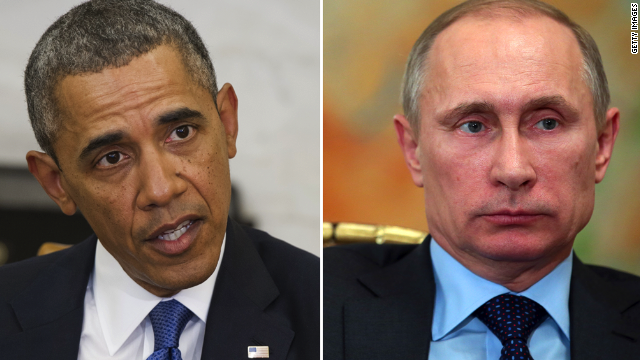The crisis in the Ukraine, Eastern Europe, started in November 2013 when President Victor Yanukovich spurned the Association Agreement with the European Union announcing that Ukraine was suspending the signing of the agreement. This immediately led to street protests in Kiev, on the Maidan, the Independence Square, in Kiev.
The level of significant support for the demonstrations was understandable. Many of those protesters believed that association with the European Union (EU) would prove beneficial for them. Large parts of the country also disagreed. In particular, the Crimea, which is an autonomous region in the Ukraine favors more bilateral trade and perhaps cultural relations with Russia.
In their defense, they have claim that a cursory look at the Association Agreement proposed by the EU reveals an entrenched effort to dismantle Ukraine’s industry complex and market to the benefit of Western multinationals.
However, the protesters and supporters of the demonstrations in Kiev do not seem to be bothered by the import of the Agreement. Rather they have stood their ground in continuing to press for more relations with the EU. Their stance has not been without leveling series of accusations of corruption against the President of Ukraine, Mr. Yanukovich.
Either way, with many indications that the riots that led to the deposing of the Ukrainian president was stoked and financed by the EU and the US, according to leaked tapes from one Washington landlady, Victoria Nuland, the protesters seem intent on galvanizing a nationalistic support, albeit fragile, that shifts Ukraine’s allegiances to the West.
Victoria Nuland’s infamous leaked telephone conversation with the US ambassador in the Ukraine in which she is heard deciding opposition leaders to be included in a proposed compromise government before the final riots broke out in Kiev and ousted Mr. Yanukovich, has not helped matters in the West’s outlook in convincing the rest of the World for a democratic stake in the Ukraine.
The EU and the US, and with the rhetoric of the hawkish Republican senator, John McCain, have always expressed their support for the protesters, while Russia with its historical ties in the Crimea and the eastern parts of Ukraine continues to emphasize their resolve to defend ethnic Russians within Ukraine at all cost.
There has also been a parade of other EU officials not deserving any important mention in the struggle to restore swift democratic changes to the Ukraine.
The protesters, many of whom are from the western parts of the Ukraine, a region historically anti-Russian, continue to dominate the interim government. This makeshift government has so far been shabbily stitched together with loose parts from rarely other regions in the country. To this end, the Russian speaking parts of the Ukraine feel an unnerving discomfort with the new Kiev.
The history and culture of the western Ukraine, which was originally part of the Austria-Hungarian Empire before Joseph Stalin annexed it during the Second World War, is equally vital in understanding the current affairs in Ukraine.
Radical neo-Nazis like the Svoboda Party and others have been very active in the region leading up to the demonstrations, the riots and events leading up to the formation of the new government. This group, the Right Sector, still hold much sway in the new Kiev.
Meanwhile, an agreement signed on February 21, 2014, brokered by the EU and Russia to quell the riots, has fallen through, and so far it does not look forward to any sort of resurrection. In that agreement the EU and Russia signed onto the following reasonable key points:
• A return to the constitution of 2004 circumscribing the power of the president and strengthening the power of parliament.
• The formation of a unity government
• Early elections to be held in December 2014
The Svoboda Party, together with other radical protesters like the Right Sector, from the western Ukraine, refused to accept the agreement even though some of their leaders in Oleg Tyangibok, Arseny Yatsenyuk a former apparatchik of the IMF, and Vitali Klitschko a former heavy weight tile boxer, had signed on.
The protesters intend demanded the resignation of the legitimately elected democratic president, Mr. Yanukovich, and placed an ultimatum on the dissolution of his government by the next day.
Due to the rapidly deteriorating political situation, Mr. Yanukovich left Kiev for the Eastern Ukraine, which has been his political base. The events that followed were swift. The opposition members of parliament moved quickly to impeach him in Kiev.
A new government was formed in the Maidan square – essentially a coup – and the new government quickly asked for approval from the demonstrators in the streets of Kiev.
To make matters more intense, the EU and the US hurriedly endorsed the self-imposed government. Unmistakably, the UN followed suit. The IMF also announced it was ready to work with the new Kiev conveniently ignoring the illegitimacy of the authorities in Kiev.
The mob immediately passed a new law banning the use of Russian as an official language and by so doing alienating the entire eastern Ukraine and the Crimea.
Following this flouting of international norms, the EU and the US surprisingly continue to stand firmly behind the new Kiev. And as such, the threat to Russian interests in Ukraine has been met with an equal show of force – an ability to be violent – by Russian military forces rearranging in the Crimea.
To understand the Russian interest in the Ukraine, one needs not only appreciate the history but also the geopolitics. Ukraine, and particularly the Crimea, holds the only year-round warm water port for the Russian navy.
In that regard it is easy to see why the UE and the US have summarily condemned the actions taken by Vladimir Putin of Russia in the Crimea. In fact they fear even more – the escalation of the issue may result in a Russian military drill in the eastern part of Ukraine many of whom are either ethnic Russians or Russian-speaking.










